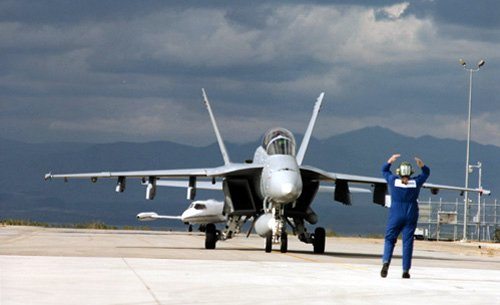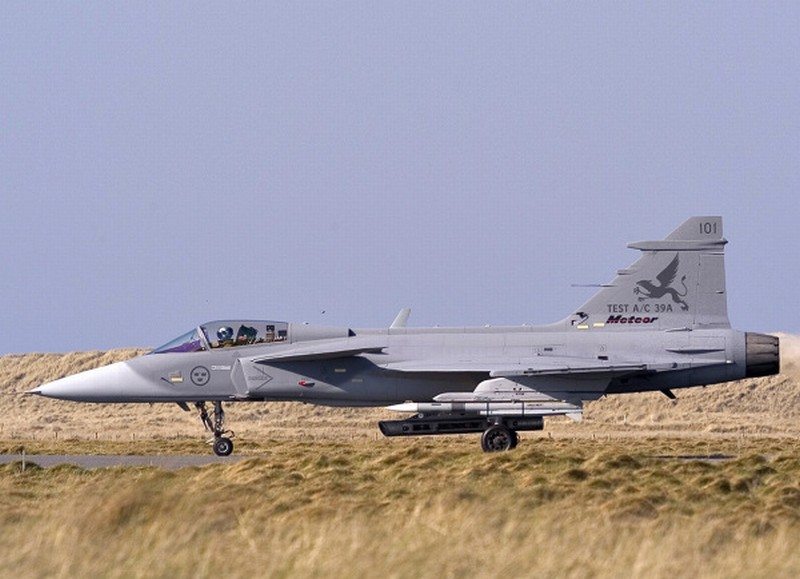Boeing and the U.S. Navy have successfully completed an in-flight demonstration of a satellite communications (SATCOM) system that, if implemented, will enable F/A-18E/F Super Hornet aircrews to conduct two-way, secure voice and data communications with other SATCOM-enabled aircraft, ships, ground forces and command centers.
The test took place May 23-30 at the Naval Air Warfare Center Weapons Division’s Advanced Weapons Lab at China Lake, Calif., and was conducted by Air Test and Evaluation Squadron VX-31.
The SATCOM system was installed on a Navy EA-18G Growler – a variant of the F/A-18F that includes a SATCOM antenna.
During the flight testing, the VX-31 aircrew conducted satellite-enabled secure voice and data transmissions with a ground-based team at China Lake and at Naval Air Station Patuxent River, Md.
“Using the existing EA-18G architecture allowed Boeing and the Navy to demonstrate this capability less than 90 days after the initial request,” said Mike Gibbons, Boeing F/A-18 and EA-18 Programs vice president.
“This approach significantly reduced risk, cost and testing schedule, while demonstrating this important communications capability for the Navy.”
The Boeing F/A-18E/F Super Hornet is a low observable, multirole aircraft that performs virtually every mission in the tactical spectrum, including air superiority, day/night strike with precision-guided weapons, fighter escort, close air support, suppression of enemy air defenses, maritime strike, reconnaissance, forward air control and tanker missions.
Boeing has delivered more than 480 F/A-18E/Fs to the U.S. Navy. The F/A-18E/F has logged more than 166,000 combat flight hours supporting operations in Iraq and Afghanistan.











